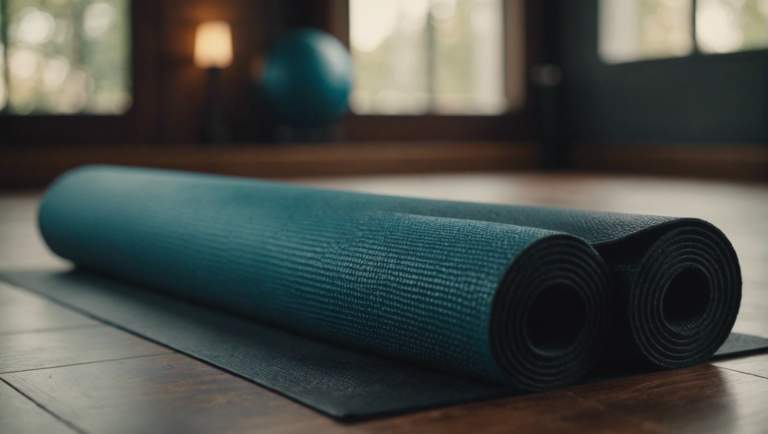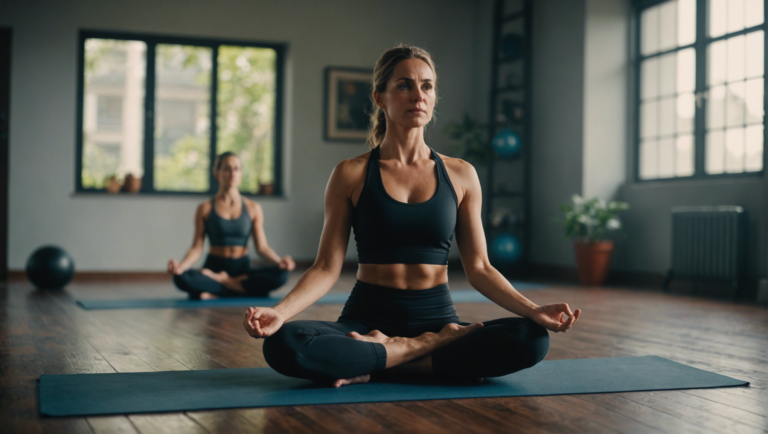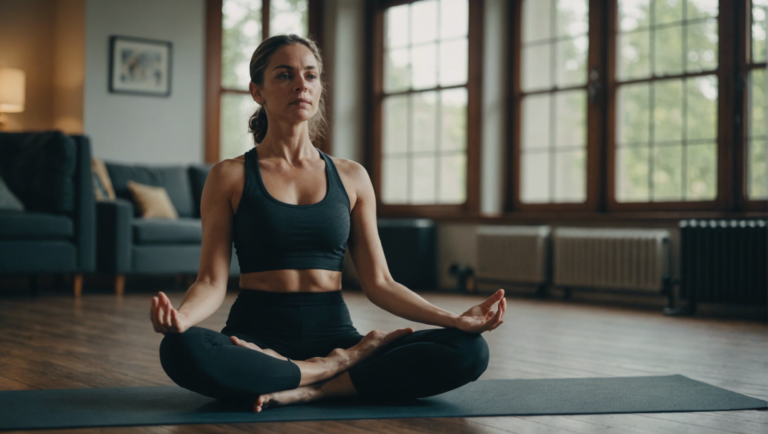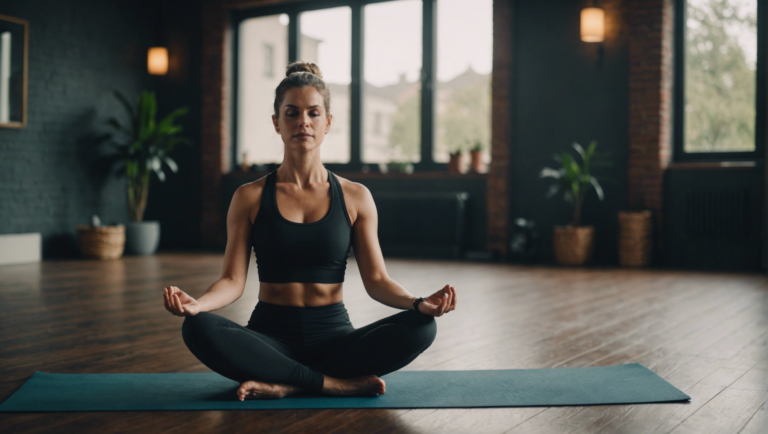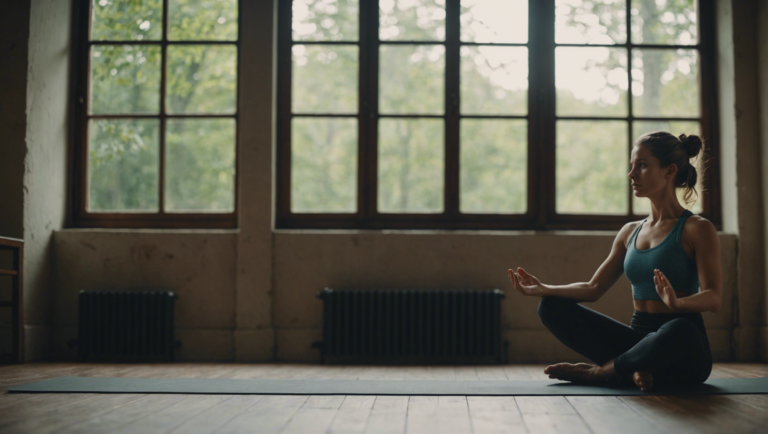Optimal Duration: How Much Yoga Should You Do Per Day?
Assessing the Optimal Duration of Daily Yoga Practices for Various Goals
Yoga, an ancient practice with roots stretching back thousands of years, is celebrated for its broad spectrum of benefits, encompassing both mental and physical well-being. Its adaptability to various lifestyles and goals makes it a unique exercise, but this also raises the question – how much daily yoga is ideal to meet specific objectives? Whether you seek stress reduction, physical fitness, or enhanced flexibility, understanding the optimal duration of daily yoga practices is crucial.
Finding Your Ideal Yoga Duration for Stress Relief
Stress relief is one of the most sought-after benefits of yoga. For those aiming to alleviate stress through yoga, shorter sessions may be surprisingly effective. Engaging in 15 to 30 minutes of gentle yoga or mindful meditation exercises daily can significantly impact stress levels. Practices such as Hatha or Yin yoga, known for their slower pace and focus on deep breathing, are particularly beneficial. These sessions, although brief, encourage a deep connection with the breath, promoting relaxation and mental clarity.
Tailoring Your Practice for Physical Fitness
For individuals with physical fitness goals, such as building muscle strength, improving endurance, or losing weight, a more vigorous approach is necessary. Integrating 45 to 60 minutes of dynamic yoga styles like Ashtanga, Vinyasa, or Power yoga into your daily routine can yield remarkable results. These practices are characterized by their fast-paced flows and challenging poses, which increase heart rate and burn calories. Consistency is key; hence, integrating these longer sessions into your daily routine is critical for achieving and maintaining fitness goals.
Enhancing Flexibility Through Dedicated Practice
Enhancing flexibility is another common goal among yoga practitioners. To achieve significant improvements in flexibility, longer sessions ranging from 45 minutes to an hour, focused on slower, more stretching-intensive yoga styles, are ideal. Practices such as Yin yoga, which involves holding poses for extended periods, can deeply stretch and strengthen connective tissues. Regular engagement in these practices not only improves flexibility but also aids in injury prevention and recovery.
Customizing Yoga Duration for Enhanced Focus and Concentration
Yoga also offers profound benefits for mental acuity, focus, and concentration. Integrating 20 to 30 minutes of meditation and breathing-focused practices such as Pranayama into your daily routine can enhance cognitive functions. These practices, which can be seamlessly added to either the beginning or end of your day, help in calming the mind and improving concentration. Over time, this dedicated practice fosters a heightened state of mental clarity and focus.
Adapting Practice Duration for Spiritual Growth
For those drawn to yoga for its spiritual benefits, the duration of daily practice can vary widely depending on individual commitments and the specific spiritual goals. Longer sessions, extending beyond an hour and including meditation, chanting, and various yoga forms, can facilitate a deeper spiritual journey. These practices, ideally conducted in a serene, distraction-free setting, offer profound insights into one’s inner self and the interconnectedness of life.
Listening to Your Body and Mind
While guidelines suggest various durations for different goals, it’s paramount to listen to your body and mind. Flexibility in adjusting the length and intensity of your yoga practice is crucial, as personal energy levels and time constraints fluctuate. Starting with realistic goals and gradually increasing the duration or intensity of the practice can lead to more sustained and enjoyable engagement with yoga.
Engaging with Yoga: A Comprehensive Approach
Engaging with yoga requires a comprehensive approach, blending patience, consistency, and awareness of one’s needs and goals. It’s about finding balance – not just in the physical practice, but in how we integrate this ancient art into our daily lives. By understanding and respecting the optimal duration for your yoga practices, tailored to your specific goals, you can unlock the full spectrum of benefits that yoga has to offer, enriching both your physical and mental well-being.
The Interplay between Yoga Durations and Health Benefits
The practice of yoga is revered not only for its tranquility and ability to enhance flexibility but also for the profound health benefits it offers. As yoga continues to surge in popularity, a key question emerges: how does the duration of one’s yoga practice influence the health benefits gained? This exploration delves into the intricate relationship between the time spent on yoga and the range of health benefits it potentially unlocks.
Unveiling the Optimal Yoga Duration
The quest for the optimal yoga practice duration has fascinated both novices and seasoned practitioners alike. Research suggests that even a brief yoga session can kindle significant health improvements. However, the depth of these benefits often correlates with the length and consistency of the practice. Engaging in yoga for at least 15 to 30 minutes daily can serve as a robust foundation for beginners, fostering improvements in flexibility, strength, and mental well-being.
Impact on Physical Health
Regular yoga practice, tailored in duration to fit one’s lifestyle and fitness goals, can be transformative. For those aiming to enhance physical fitness or weight management, longer sessions ranging from 45 to 60 minutes, practiced multiple times a week, are beneficial. This extended engagement not only elevates cardiovascular health but also amplifies muscle tone and endurance, thereby crafting a stronger, more resilient body.
Mental and Emotional Well-being
The mental health benefits of yoga are profound and well-documented. From reducing stress and anxiety to enhancing mood and cognitive function, the practice offers an oasis of calm in our bustling lives. Interestingly, the duration of each session plays a pivotal role in deepening these effects. Even short daily practices of 15 to 20 minutes can significantly alleviate stress and boost mental clarity. For those exploring meditation and deeper mental healing through yoga, longer durations can provide the space and time necessary for these more profound explorations.
Consistency Over Duration
While the duration of yoga practice is undeniably important, the consistency of practice often holds greater significance. A shorter, daily practice can yield more pronounced benefits over time than sporadic, longer sessions. The key lies in regular engagement, allowing the body and mind to absorb and adapt to the nuances of the practice, thereby fostering a deeper, more enduring transformation.
Tailoring Practice to Personal Needs
Understanding that individual needs and goals vary greatly, personalizing the duration of yoga practice is essential. For some, a vigorous 60-minute session may be invigorating and deeply satisfying, while for others, a gentle 20-minute session may offer the perfect balance of relaxation and rejuvenation. Listening to one’s body and adjusting the practice accordingly is pivotal in maximizing the benefits while ensuring sustainability and enjoyment of the practice.
Expert Recommendations and Personal Experimentation
Experts advocate starting with manageable durations and gradually building up as one becomes more comfortable and adept at the practice. a variety of styles and durations can also enrich the experience, catering to different aspects of health and well-being. Personal experimentation, guided by mindful awareness and possibly the advice of experienced instructors, can help uncover the ideal practice duration that aligns with individual health goals and lifestyle constraints.
The interplay between yoga durations and health benefits is complex and personalized. While longer sessions may unlock greater physical and mental benefits, consistency, and personalization of practice duration play critical roles in achieving holistic health and well-being. As we aim to integrate yoga more fully into our lives, understanding and respecting our individual needs and limits is paramount in nurturing a practice that is both healing and sustainable.
Customizing Your Yoga Routine: Factors That Influence How Long You Should Practice
Yoga, an ancient practice with modern relevance, offers extensive health benefits, ranging from improved flexibility and strength to enhanced mental clarity and stress reduction. However, one of the most common queries among both beginners and seasoned practitioners revolves around the optimal duration for a yoga session. While yoga does not adhere to a one-size-fits-all approach, several key factors can help tailor your practice to suit your individual needs, goals, and lifestyle.
Personal Goals and Objectives
Your personal goals play a pivotal role in determining the length of your yoga routine. For individuals aiming to improve flexibility or achieve specific postural milestones, a longer session that allows for extended time in each pose may be beneficial. Conversely, if your goal is to maintain general health or incorporate a mindfulness practice into a busy schedule, shorter sessions might be more practical and sustainable. Understanding and clearly defining your objectives will enable you to customize a routine that aligns with your aspirations and available time.
Current Fitness Level and Experience
Your physical condition and yoga proficiency significantly impact the ideal duration of your practice. Beginners should consider starting with shorter sessions to acclimate their bodies and gradually build endurance. Attempting overly long sessions prematurely can lead to discouragement or, worse, injury. For more experienced practitioners, longer sessions provide an opportunity to explore advanced poses and sequences more deeply. Listen to your body and respect its limits as you progress.
Schedule and Lifestyle Constraints
Realistically, your daily commitments and lifestyle will influence how much time you can dedicate to yoga. It’s essential to create a balance that does not add stress or overwhelm your routine. Even ten to fifteen minutes of yoga daily can yield noticeable benefits if practiced consistently. Finding a sustainable rhythm that complements rather than conflicts with your lifestyle encourages adherence and fosters a more enjoyable and rewarding practice.
Physical and Mental Needs
The state of your physical and emotional well-being on any given day can guide the appropriate length for your yoga practice. During times of high stress or fatigue, a gentle, restorative practice of shorter duration may offer the most benefits, helping to recharge your mental and emotional reserves. On days when you feel energetic and strong, you might opt for a more vigorous or extended session to challenge your physical limits and improve endurance. Tuning into your body’s and mind’s needs allows you to adapt your practice accordingly, making it a truly personalized form of self-care.
Types of Yoga Being Practiced
The style of yoga you choose can also dictate the optimal session length. Dynamic styles such as Ashtanga or Vinyasa might warrant shorter sessions due to their intensity, focusing on building strength and stamina. In contrast, slower-paced styles like Hatha or Yin are often practiced for longer periods, emphasizing deep stretching and mindfulness. Consider the characteristics of different yoga styles in relation to your goals and preferences to determine the most suitable and fulfilling practice length.
Crafting a yoga routine that reflects personal goals, fitness levels, lifestyle, physical and mental states, and preferred yoga styles is pivotal in maximizing the benefits of your practice. While there’s no universal answer to the optimal yoga session length, starting with these considerations allows for a customized approach that promotes growth, health, and balance. Remember, the journey of yoga is deeply personal and evolving; what works today may shift in the future. Embrace the flexibility to adapt your practice as you navigate different phases of life and enjoy the multitude of benefits yoga offers at every step.
Overcoming Challenges and Plateaus in Yoga with Adequate Practice Time
Discover Your Optimal Yoga Schedule to Surpass Plateaus
Embarking on a yoga journey unfolds a myriad of benefits, ranging from enhanced flexibility and strength to improved mental clarity. However, as with any form of exercise or personal growth path, practitioners often encounter stalls or plateaus. These periods of stagnation can be frustrating, leading many to question the adequacy of their practice time. Understanding how to adjust your yoga routine can significantly help in overcoming these plateaus, propelling you toward your goals.
Recognize the Signs of a Plateau
First and foremost, identifying the signs of a plateau is crucial. A plateau in yoga can manifest as a lack of progress in physical flexibility, strength, or a stagnant mental state despite regular practice. You might find yourself struggling to learn new poses, improve in the ones you’re familiar with, or simply lacking the enthusiasm you once had.
Evaluate Your Current Practice
A thoughtful evaluation of your current practice is a pivotal next step. Consider the frequency, intensity, and duration of your sessions, as well as the variety of styles or sequences you’re engaging in. It’s common for practitioners to stick too closely to a routine, leading to physical and mental complacency. A diverse practice that challenges you in new ways is essential for growth.
Adjusting Practice Time for Growth
Adjusting your practice time can significantly influence your progress. The key is not just to practice more but to practice smarter. For many, a session lasting between 20 to 60 minutes can be highly effective, especially when the focus is on quality rather than quantity. Balancing longer sessions with more intense, focused short practices can provide the varied stimulus your body and mind need to break through plateaus.
Integrating Different Yoga Styles
Exploring different styles of yoga can reintroduce the challenge and excitement that might have waned. If your practice has primarily been focused on Vinyasa or Hatha, incorporating Yin or Kundalini might offer the fresh perspective needed. Each style of yoga has unique benefits and focuses, challenging your body and mind in new ways that can help push past any stagnation.
Listening to Your Body and Mind
An often-overlooked aspect of overcoming plateaus is the importance of listening to your body and mind. Sometimes, what’s needed is not more yoga but a different approach to your overall wellness routine. Integrating rest days, meditation, or even other forms of exercise can provide the balance needed to advance in your practice.
Setting New Goals and Intentions
Setting new, achievable goals can reignite your passion for yoga and provide a clear direction. Whether it’s mastering a new pose, deepening your understanding of yoga philosophy, or improving your breathing techniques, having specific objectives can guide your practice adjustments effectively.
Embracing the Journey
Embracing the journey of yoga, with its ups and downs, is essential. Yoga is not just a physical practice but a lifelong journey of growth and learning. Plateaus, when approached with patience and curiosity, offer valuable lessons and opportunities for deeper self-discovery.
Overcoming challenges and plateaus in yoga is a multifaceted process that involves not only adjusting your practice time but also embracing new experiences, listening to your body, and setting mindful goals. By adopting a flexible and open-minded approach to your practice, you can ensure continuous growth and keep the flame of your passion for yoga burning brightly.
Future Directions in Yoga: Research and Trends Impacting Practice Duration Recommendations
Evolving Research on Yoga Practice Duration
The landscape of yoga is ever-evolving, shaped by both ancient wisdom and modern scientific inquiry. As yoga continues to be a subject of rigorous research, our understanding of its optimal practice duration is being refined. These studies not only illuminate the potential health benefits but also challenge and expand existing guidelines on how much yoga one should do per day.
The Crossroads of Tradition and Science
Yoga, a practice with roots stretching back thousands of years, has historically been guided by the experiential insights of its practitioners. In contrast, the scientific community seeks to quantify yoga’s benefits, investigating how its practice affects mental, physical, and emotional health. As these two worlds converge, a fascinating dialogue emerges, proposing adjustments to how we approach yoga in our daily lives. This duality of approach ensures that recommendations for yoga practice duration are both grounded in tradition and validated by scientific evidence.
Personalization of Practice: A Trend to Watch
One of the most significant trends impacting yoga practice recommendations is the move towards personalization. Emerging research suggests that there is no one-size-fits-all answer to how much yoga one should do. Factors such as individual health goals, fitness levels, and even genetic predispositions are being considered in tailoring yoga practices. This custom approach is increasingly supported by studies demonstrating that personalized yoga routines can optimize benefits and reduce the risk of injury.
Technology’s Role in Shaping Yoga Practices
The integration of technology into yoga practices is another trend shaping future directions. Wearable devices and mobile applications now offer insights into how yoga affects our bodies in real-time, from tracking heart rate variability to monitoring stress levels. This data can influence practice duration recommendations, ensuring they are based on empirical evidence of physiological responses rather than arbitrary time frames.
The Impact of Yoga on Mental Health
An area of burgeoning interest within the yoga research community is its impact on mental health. Studies are examining not just the physical but the psychological benefits of yoga, including its potential to alleviate symptoms of anxiety, depression, and stress. These findings may lead to tailored yoga practices focusing more on duration and frequency that provide the greatest mental health benefits.
Sustainability and Long-Term Engagement
Another critical aspect of future yoga practice recommendations revolves around sustainability. Researchers are increasingly interested in what keeps individuals engaged with yoga over the long term. Understanding the factors that influence long-term adherence to yoga could inform recommendations that balance effectiveness with personal enjoyment and lifestyle compatibility.
Beyond Asanas: Exploring Meditative and Breathwork Practices
While much of the attention has been on the physical postures of yoga (asanas), there’s a growing recognition of the importance of meditative practices and pranayama (breath control) in a comprehensive yoga routine. These elements of yoga offer profound benefits and influence how long and how often one should engage in yoga practice. As research continues to uncover these benefits, recommendations may increasingly emphasize the balance of asanas, meditation, and pranayama.
Final Thoughts
As we look to the future, it’s clear that the optimal duration for yoga practice will remain a dynamic topic, influenced by ongoing research and evolving trends. The integration of scientific inquiry with traditional wisdom promises to refine our approach to yoga, making it more personalized, effective, and aligned with our individual needs and goals. This marriage of science and spirituality will undoubtedly shape the recommendations around yoga practice duration, ensuring they serve the holistic well-being of practitioners around the globe.
Conclusion
An exploration into the optimal duration of daily yoga practice unveils a mosaic of factors, benefits, and considerations, tailoring a unique experience for each individual. The journey through assessing the best practice lengths for various goals sets a foundational understanding that yoga is not a one-size-fits-all regimen. From enhancing physical health to fostering mental well-being, the alignment of practice duration with personal objectives emerges as pivotal. This insight underscores the importance of not merely clocking in time but ensuring that every moment spent on the mat contributes purposefully towards the intended outcomes.
Delving deeper into the interplay between yoga durations and health benefits, we uncover a rich tapestry of research underscoring how different lengths of practice can yield distinct advantages. Shorter sessions may bolster focus and reduce stress, acting as a quick reset in a hectic day, while longer practices have the capacity to profoundly impact physical fitness, flexibility, and deeper psychological constructs. This dichotomy not just illuminates the versatility of yoga but also emphasizes the need for practitioners to carefully consider what they aim to achieve with their practice.
The narrative then shifts to the customization of yoga routines, marking an important chapter in a practitioner’s journey. Understanding that variables such as age, physical condition, lifestyle, and even the time of day play significant roles in determining the ideal length of practice, illuminates yoga’s flexibility. This realization encourages a mindset shift from following prescriptive durations to embracing a more introspective approach, where one listens to and respects the body’s cues. The ability to adapt and modify one’s practice in alignment with personal needs and circumstances stands out as a crucial skill for sustained engagement and benefit from yoga.
Addressing challenges and plateaus in yoga through adequate practice time sheds light on the dynamic nature of personal growth within the discipline. As practitioners evolve, so do their needs and capacities, requiring adjustments in practice frequency and duration. This segment of the journey is characterized by introspection and patience, recognizing that progress is not linear and that sometimes, increasing practice time or introducing variation can reinvigorate one’s passion and development in yoga. It’s a testament to yoga’s inherent adaptability and its role in fostering a deep, introspective understanding of one’s body and mind.
Looking ahead to future directions in yoga, we engage with the growing body of research and emerging trends that continue to shape advice on practice durations. As scientific inquiry delves deeper into the physiological and psychological impacts of yoga, the recommendations for practice length will undoubtedly become more nuanced and personalized. This forward-looking perspective not only excites current practitioners with the prospect of more tailored guidance but also invites newcomers to embark on a yoga journey that may be more aligned with contemporary understandings of health and wellness.
This exploration culminates in the recognition that determining the optimal duration for daily yoga practice is a deeply personal endeavor, influenced by a constellation of factors unique to each individual. It underscores the transformative potential of yoga—not just as a physical or meditative practice, but as a lifestyle that encourages continuous learning, adaptability, and personal growth. As research evolves and as we become more attuned to the nuances of our own bodies and minds, the journey towards finding our ideal yoga practice in both form and duration is an ongoing one. Embracing this journey with curiosity, openness, and mindfulness will ensure that our yoga practice remains a source of strength, flexibility, and tranquility in an ever-changing world.

